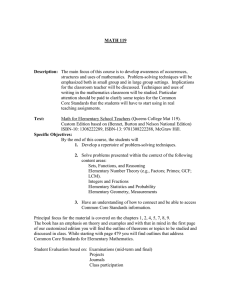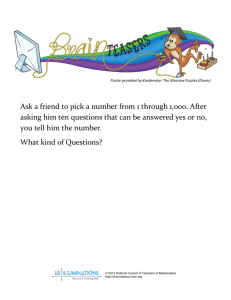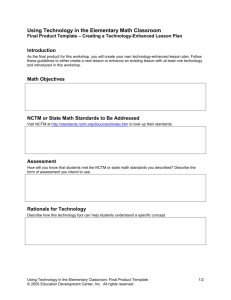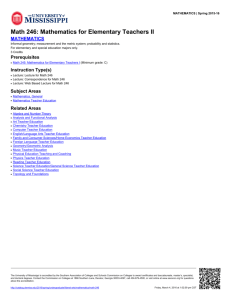DO COMPUTERS PROMOTE SOLVING PROBLEMS ABILITY IN ELEMENTARY SCHOOL?
advertisement
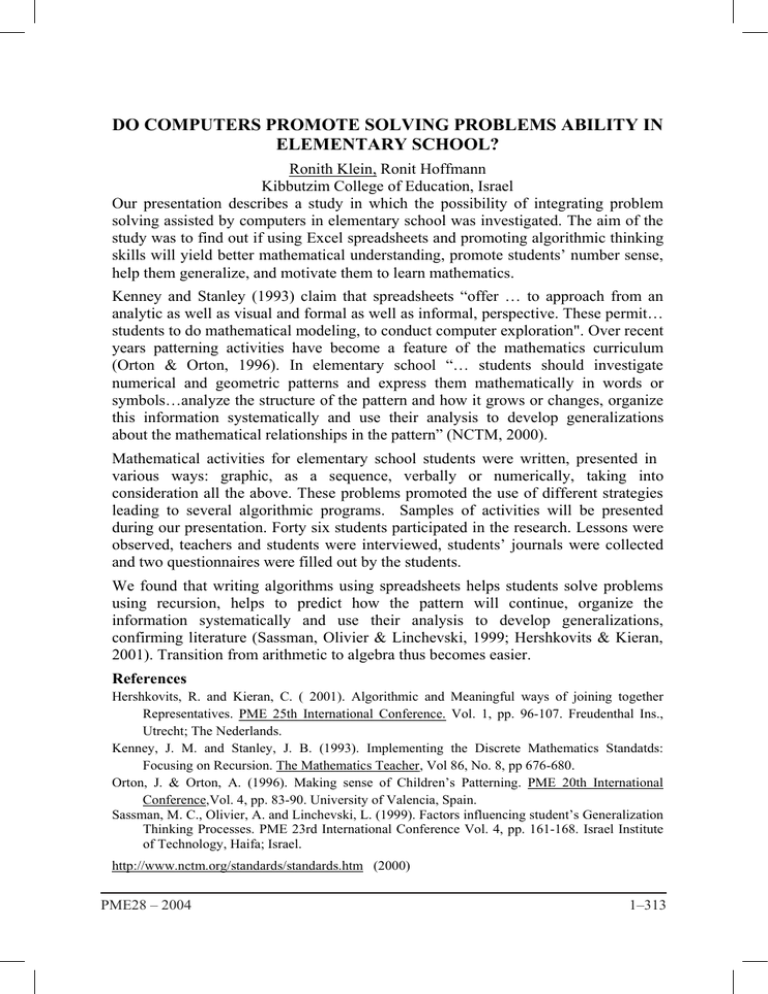
DO COMPUTERS PROMOTE SOLVING PROBLEMS ABILITY IN ELEMENTARY SCHOOL? Ronith Klein, Ronit Hoffmann Kibbutzim College of Education, Israel Our presentation describes a study in which the possibility of integrating problem solving assisted by computers in elementary school was investigated. The aim of the study was to find out if using Excel spreadsheets and promoting algorithmic thinking skills will yield better mathematical understanding, promote students’ number sense, help them generalize, and motivate them to learn mathematics. Kenney and Stanley (1993) claim that spreadsheets “offer … to approach from an analytic as well as visual and formal as well as informal, perspective. These permit… students to do mathematical modeling, to conduct computer exploration". Over recent years patterning activities have become a feature of the mathematics curriculum (Orton & Orton, 1996). In elementary school “… students should investigate numerical and geometric patterns and express them mathematically in words or symbols…analyze the structure of the pattern and how it grows or changes, organize this information systematically and use their analysis to develop generalizations about the mathematical relationships in the pattern” (NCTM, 2000). Mathematical activities for elementary school students were written, presented in various ways: graphic, as a sequence, verbally or numerically, taking into consideration all the above. These problems promoted the use of different strategies leading to several algorithmic programs. Samples of activities will be presented during our presentation. Forty six students participated in the research. Lessons were observed, teachers and students were interviewed, students’ journals were collected and two questionnaires were filled out by the students. We found that writing algorithms using spreadsheets helps students solve problems using recursion, helps to predict how the pattern will continue, organize the information systematically and use their analysis to develop generalizations, confirming literature (Sassman, Olivier & Linchevski, 1999; Hershkovits & Kieran, 2001). Transition from arithmetic to algebra thus becomes easier. References Hershkovits, R. and Kieran, C. ( 2001). Algorithmic and Meaningful ways of joining together Representatives. PME 25th International Conference. Vol. 1, pp. 96-107. Freudenthal Ins., Utrecht; The Nederlands. Kenney, J. M. and Stanley, J. B. (1993). Implementing the Discrete Mathematics Standatds: Focusing on Recursion. The Mathematics Teacher, Vol 86, No. 8, pp 676-680. Orton, J. & Orton, A. (1996). Making sense of Children’s Patterning. PME 20th International Conference,Vol. 4, pp. 83-90. University of Valencia, Spain. Sassman, M. C., Olivier, A. and Linchevski, L. (1999). Factors influencing student’s Generalization Thinking Processes. PME 23rd International Conference Vol. 4, pp. 161-168. Israel Institute of Technology, Haifa; Israel. http://www.nctm.org/standards/standards.htm (2000) PME28 – 2004 1–313

